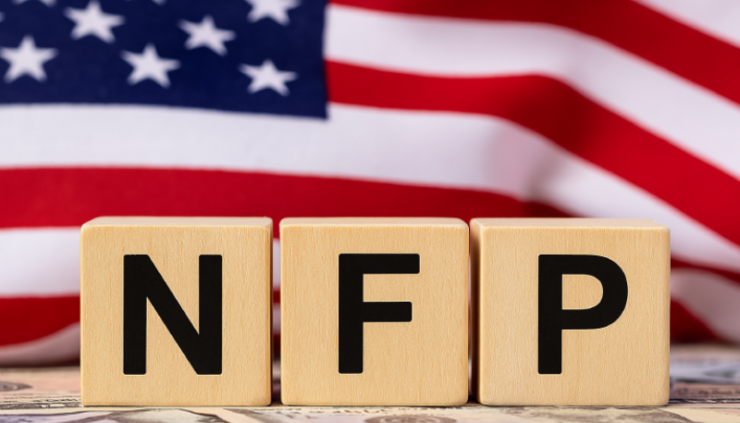Bitcoin is holding above key price levels as markets brace for the release of the March nonfarm payrolls (NFP) report, a critical barometer of U.S. labor market strength. The cryptocurrency’s resilience comes amid heightened geopolitical and economic volatility following President Donald Trump’s sweeping tariff announcement targeting 180 nations.
At press time, bitcoin traded near $84,320, having rebounded from sub-$82,000 levels. Despite peaking tariff uncertainty, the cryptocurrency remains well above the March low of $77,000, suggesting what analysts describe as “seller fatigue.” The Volmex one-day implied volatility index for bitcoin stood at 65% annualized, implying a potential 3.4% price swing in the next 24 hours.
Tariff Shock Repositions Risk Markets
President Trump’s announcement on Wednesday unveiled a new economic doctrine under the banner of a “Declaration of Economic Independence.” The policy includes a 10% baseline tariff on nearly all imported goods, with elevated rates for countries like China (54%), Japan (24%), the EU (20%), and Southeast Asian nations (up to 48%). Foreign car imports also face a 25% tariff, while Canada and Mexico are exempt.
Markets responded sharply. The Dow Jones Industrial Average dropped 1,679 points, or 4%, its steepest decline since 2020. The Nasdaq slid nearly 6%, and the S&P 500 fell 4.84%. The rout erased an estimated $3.1 trillion in market value. Stocks with high exposure to global supply chains, such as Apple and Nike, tumbled more than 9% and 14%, respectively.
International markets mirrored the decline. Asian equities fell, with Japan’s Nikkei hitting an eight-month low. The Chinese yuan weakened to a seven-week low of 7 per dollar. Market watchers are closely monitoring Beijing’s response, particularly the possibility of a currency devaluation.
“If China devalues the yuan… that sets off a global risk-off,” said Robin Brooks, chief economist at the International Institute of Finance, on X.
Bitcoin, often considered a risk-on asset, dropped from $88,000 to $82,500 after the tariff news broke. It now flirts with a bearish technical signal as its 50-day simple moving average approaches a crossover below the 200-day, known as a “death cross.” Options data from Deribit and Amberdata shows increased demand for downside protection through June.
Jobs Data Could Break Directionless Drift
The March NFP report, due at 12:30 UTC, may provide a fresh catalyst. FactSet estimates predict job growth of 130,000, down from 151,000 in February. The unemployment rate is forecast to rise to 4.2% from 4.1%.
Market participants are split on how the data will be interpreted. Strong job growth might typically weigh on bitcoin by bolstering the dollar and reinforcing expectations of tighter monetary policy. However, analysts argue the data could be outdated given the rapid macroeconomic changes triggered by the tariff regime.
Weak payrolls would likely reinforce recession fears and support Federal Reserve rate cut expectations. According to the CME FedWatch tool, traders currently price in 100 basis points of rate reductions for 2025, with the first expected in June.





